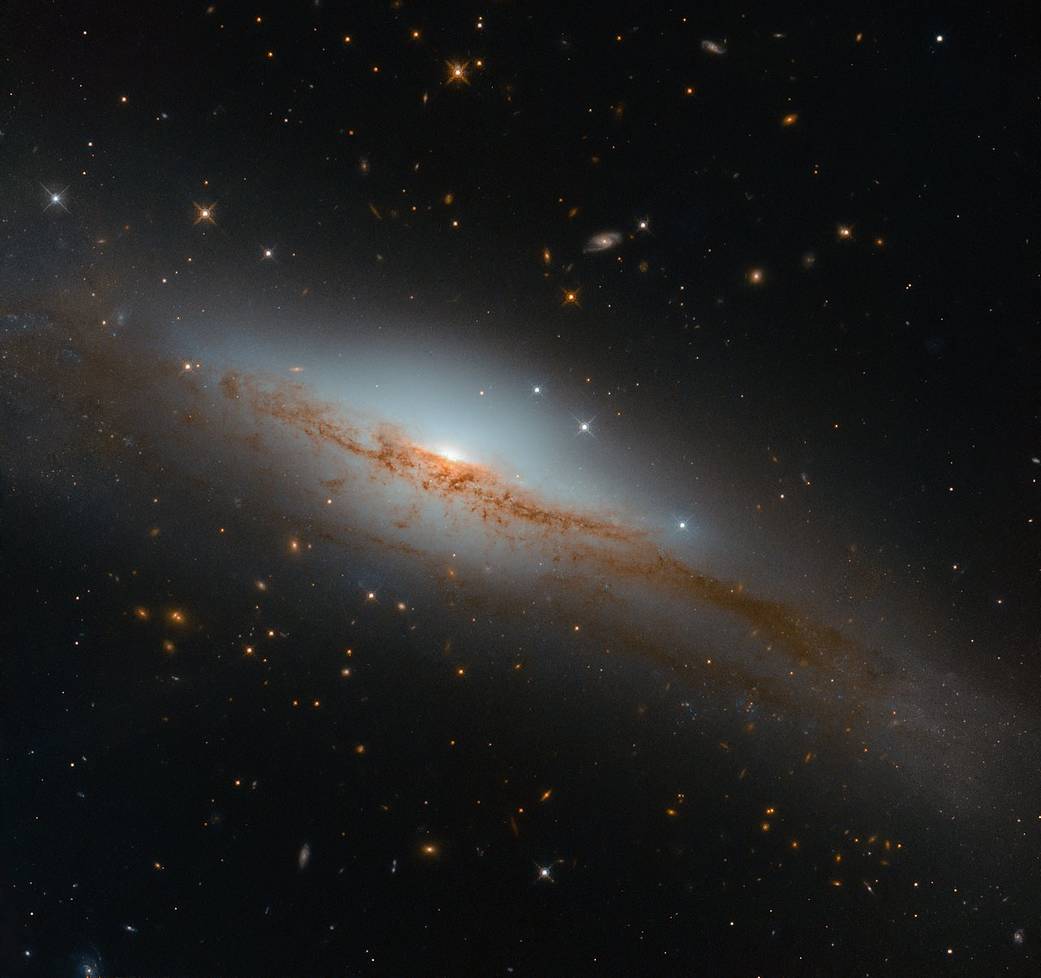For this image, the NASA/ESA Hubble Space Telescope turned its powerful eye toward an emission-line galaxy called NGC 3749.
When astronomers explore the contents and constituent parts of a galaxy somewhere in the universe, they use various techniques and tools. One of these is to spread out the incoming light from that galaxy into a spectrum and explore its properties. This is done in much the same way as a glass prism spreads white light into its constituent wavelengths to create a rainbow. By hunting for specific signs of emission from various elements within a galaxy’s spectrum of light —so-called emission lines — or, conversely, the signs of absorption from other elements — so-called absorption lines — astronomers can start to deduce what might be happening within.
If a galaxy’s spectrum shows many absorption lines and few emission lines, this suggests that its star-forming material has been depleted and that its stars are mainly old, while the opposite suggests it might be bursting with star formation and energetic stellar newborns. This technique, known as spectroscopy, can tell us about a galaxy’s type and composition, the density and temperature of any emitting gas, the star formation rate, or how massive the galaxy’s central black hole might be.
While not all galaxies display strong emission lines, NGC 3749 does. It lies over 135 million light-years away and is moderately luminous. The galaxy has been used as a “control” in studies of especially active and luminous galaxies — those with centers known as active galactic nuclei, which emit copious amounts of intense radiation. In comparison to these active cousins, NGC 3749 is classified as inactive, and has no known signs of nuclear activity.
Text credit: ESA (European Space Agency)
Image credit: ESA/Hubble & NASA, D. Rosario et al.
为了这张图片,美国宇航局/欧洲航天局的哈勃太空望远镜将其强大的目光转向了一个名为NGC 3749的发射线星系。
当天文学家探索宇宙中某个星系的内容和组成部分时,他们使用各种技术和工具。其中之一是将来自星系的入射光分散到光谱中,并探索其特性。这与玻璃棱镜将白光传播到其组成波长形成彩虹的原理非常相似。通过寻找星系光谱中各种元素发射的具体信号,即所谓的发射线,或者相反,寻找其他元素的吸收信号,即所谓的吸收线,天文学家可以开始推断星系内部可能发生的事情。
如果一个星系的光谱显示出许多吸收线和很少的发射线,这表明它的恒星形成物质已经耗尽,而且它的恒星主要是古老的,而相反的表明它可能会爆发恒星形成和高能恒星新生。这种技术被称为光谱学,它可以告诉我们星系的类型和组成,任何气体的密度和温度,恒星的形成速度,或者星系中心黑洞的质量。
虽然不是所有的星系都有很强的发射线,但NGC 3749却有。它位于1.35亿光年之外,中等亮度。该星系一直被用作研究特别活跃和发光的星系的“控制体”,这些星系的中心被称为活跃星系核,它们发射大量的强辐射。与这些活跃的表亲相比,NGC 3749被归类为不活跃的,并且没有已知的核活动迹象。
文字来源:欧洲航天局(ESA)
图片来源:ESA/Hubble & NASA, D. Rosario等。








单单站在一个普通人的角度来看,它真的太美了